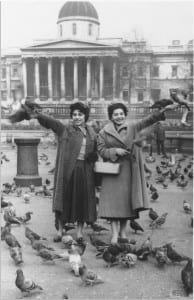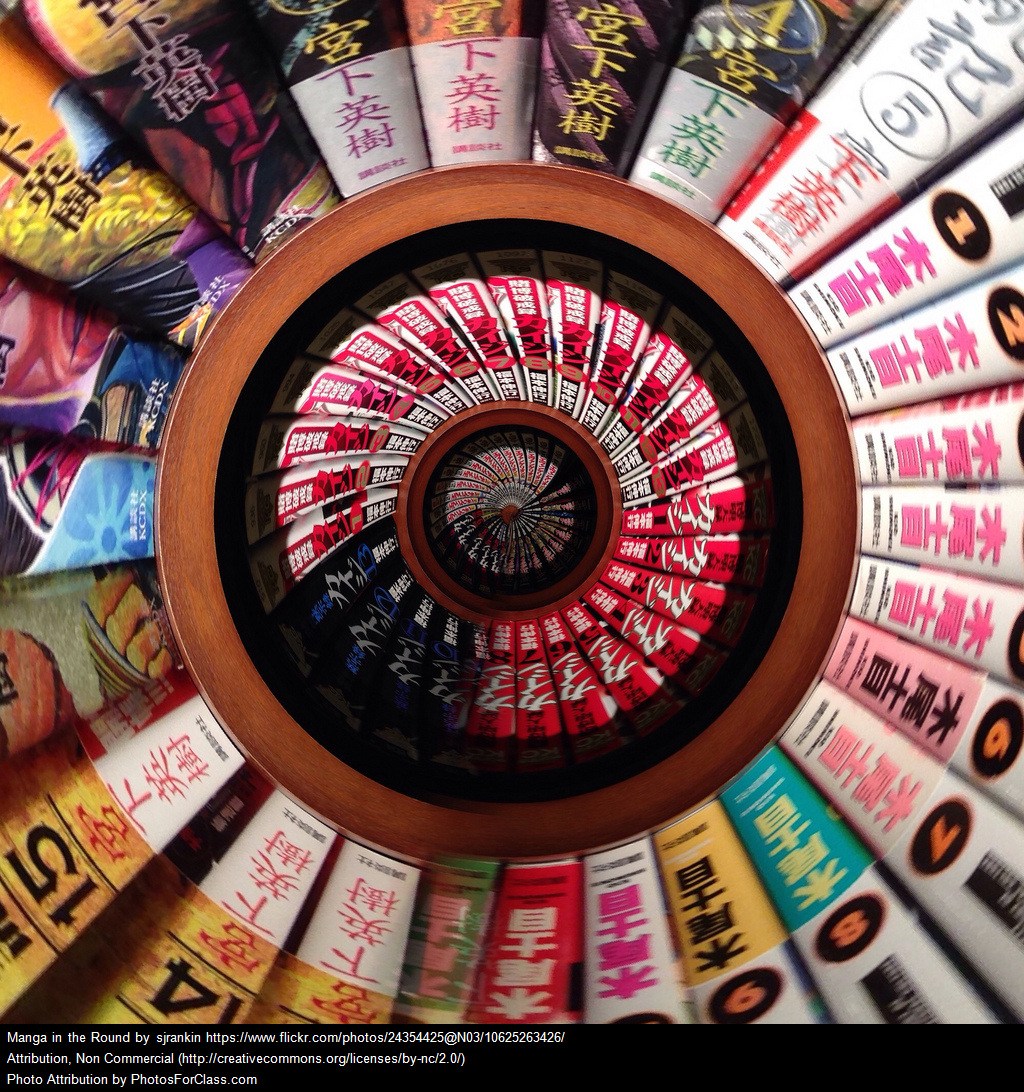by Melanie Stonebanks
By looking back and by remembering the past, I have attempted to bind my past experiences as a professional educator in several contexts and roles to create patterns of my professional development in the stream of my consciousness (Green, 1991).
Okay, I’ll admit it…I’m nosey by nature, so when the high school publication Rainbow of Dreams (http://www.nd.ca/tournoi/ref/rainbow/index.htm) crossed by my desk I was instantly hypnotized. Leafing through the pages, I’ll never forget the countless faces reaching out and drawing me in. There was something about these silent images that beckoned me to read their stories. I had to find out where they had come from and why their pictures had been captured at that particular time in their lives. I read and I read and I thought to myself that this would be a perfect literacy project for my class to undertake.
It took a few years after having discovered the ground breaking high school work (two further publications had come out in the mean time) before I was ready to tackle this type of inquiry assignment with my students. My class’s heritages spanned from various cultural backgrounds that touched all parts of the globe. My motivation was not only for my multicultural students to learn from and about each other in order to build understanding and acceptance but to empower them through the discussions and writing they would produce and share with each other and the community.
Days and weeks that turned into months were spent together pouring over family photographs, asking each other questions about where we came from, why we had left our native homeland, what we had brought with us on and continued to practice in our new country and what we had to leave behind. Questions that couldn’t be answered at the moment, were sent home, discussed with parents and grand-parents and then brought back to move the conversation forward. The students knew they were in a safe environment where no one would openly pass judgement, mock or demean them. Together, we could take risks, we could ask questions, we could share stories, we could laugh and we could cry.
I think one of the most powerful moments during this project came when a student teacher who was in doing a final field experience with me, decided that he would like to investigate his past as well. He worked simultaneously with my students in order to follow the process as authentically as possible. The day came when it was his turn to share with the class the first draft of his “constructed memoir” (the major writing piece for this inquiry was for each student to take a family photograph that spoke to them, interview family members to uncover the story behind the photograph, then take the information from the interview and craft it into a memoir from the perspective of one of the people in the photograph…this involved many, many hours of instruction of reading photographs, asking questions, interview techniques, reading and writing the memoir genre, writer’s craft, oral speaking, peer editing, and much more).
As he stood in front of his young audience, he read to them a story of leaving home and family behind, a story that obviously reached deeply into whom he was and where his roots held fast. I say obviously as part way through the retelling, his voice wavered and cracked, tears welled up in his eyes as he struggled to continue his reading. My students were transfixed. Their bodies in complete stillness as they sat in their seats listening to him try to get his story out. He needed to share this narrative with them and they knew this. Quietly and without disruption, a couple of my twelve year old students turned and questioned me with their eyes of what they should do. I nodded to them and gestured that all was alright and that we should let him continue. As he concluded his sorrowful and moving tale, the class burst into a round of supportive applause. He had put himself out. He had taken a risk. He had shared with them a piece of himself and they understood this. It was a transformative moment in my classroom for each and every one of us.
Reflection of Rainbow of Dreams
I am always hesitant to share anecdotes of successful teaching and learning moments in my history for fear of coming across as some “super teacher” in the likes of Ms. Frizzle of Magic School bus fame (who is my idol by the way…what better mantra than “Take chances, make mistakes and get messy!”). The above narrative was one positive incident where there was harmony between a desired critical literacy outcome and the reality of what actually transpired in the classroom. Occasions like that one are often few and far between with missed opportunities and inconsiderate unconscious and/or dysconscious reactions being the rule rather than the exception (according to King (1991) dysconsciousness is a state of mind that occurs when there is exclusion and disconnect of the Other’s pain).
One of those reactions took place while the students were in the midst of searching for their family snapshots. Most of the pictures that were handed in showcased wedding photographs, images of families partaking in celebrations, outdoor gardens and homes long gone as well as individuals who had since past away but held a place of honour in the history of the family and the country of origin. As I was sifting through the pile of pictures, noting who had brought what in, my student teacher approached my desk with a look of concern on his face. He placed the photograph in front of me and I remember being quite taken aback by the image of the young smiling man standing behind the large anti-aircraft gun, hands in ready position. There was no way that I was going to be able to use this photograph. It was violent and who knew how many people had been killed before or after this picture had been taken.
That night at supper, I spoke with my husband about the photograph and asked his advice as to how I should approach the student in order to discuss the inappropriateness of his choice. What followed was another lesson in how I had missed a critical literacy possibility and was running the risk of closing the door to learning for one of my students. What I have not yet divulged to the reader is that the country of origin of the armed soldier was Iran and what I was dealing with was the bias I had to these types of images in relation to the country in which they were taken. After all, Christopher (whose father was of mixed English-Italian decent and served in three wars himself) asked me how I would have reacted if a child had brought in a shot of a grandparent who fought for the Canadian, British or American army in WW1 or WW2 or Korea, or Vietnam or etc., etc. I had to be honest and say that because I had grown up seeing these types of photographs depicting “our heroes”, I wouldn’t have batted an eye.
In case you are wondering, the student used the photograph in his project and it turned out that his father was not a soldier but an informations officer who had stood there behind the gun and simply asked his buddy to take the picture for a lark. Another bit of information I would never have learned if I had allowed my background and bias make the final decision. The next step though is to ask myself “why does that make a difference and make me feel better”?
Conclusion
My own personal development of any true sense of being conscious came from discussions with my husband who was in graduate school when I began my entry into teaching in the classroom. However, it must be said that even when you become aware of what it is that you should be working towards enacting; there are so many factors that stop you from truly engaging in critical pedagogy and critical literacy. Essentially what occurs is that the majority of your time is spent with acts of micro resistance and with the few and far between overt actions that leave you sick. The micro resistance then becomes lost over time and it’s not those minor attempts that become the critical incidents rather it’s the ones that you lose sleep over when you worry about responses from the administration, peers, parents and community. This is probably why they are so few and far between.
As someone who now teaches at the university level, I disagree with the often repeated notion (and one that I have to admit held myself at one time) that there is such a large chasm between academics and “the real world of teaching”. But the one reality that did and does still exist is the fear. Teachers often pride themselves on being the vanguard for change but after two plus decades of teaching, I am starting to agree with the social theorists that state that schools are a reflection of society; we change only when society changes.
References for further reading:
Green, M. (1988). The Dialectic of Freedom. New York: Teachers College Press.
King, J.E. (1991). Dysconscious Racism: Ideology, Identity, and the Miseducation of Teachers in Journal of Negro Education, Vol. 60, No. 2, pp. 133-146, Spring.





Your post really drew me in, Melanie, just like a good book! What a great idea for an activity. I love this kind of activity that crosses into so many subjects, in fact, the subjects shift and merge depending on who does it! I am dying to know the story of your student teacher, but I’m sure you can’t say anymore to respect his privacy. As they say in showbiz, always leave them wanting more!
This is great Melanie. I always find it good to hear stories that show vulnerability in our teaching practices, as you have shared here on a number of levels. It is tempting to provide “educational infomercials,” and I know that I am as guilty as anyone of doing that at times, but our stories are more credible and helpful when we can share at this level.